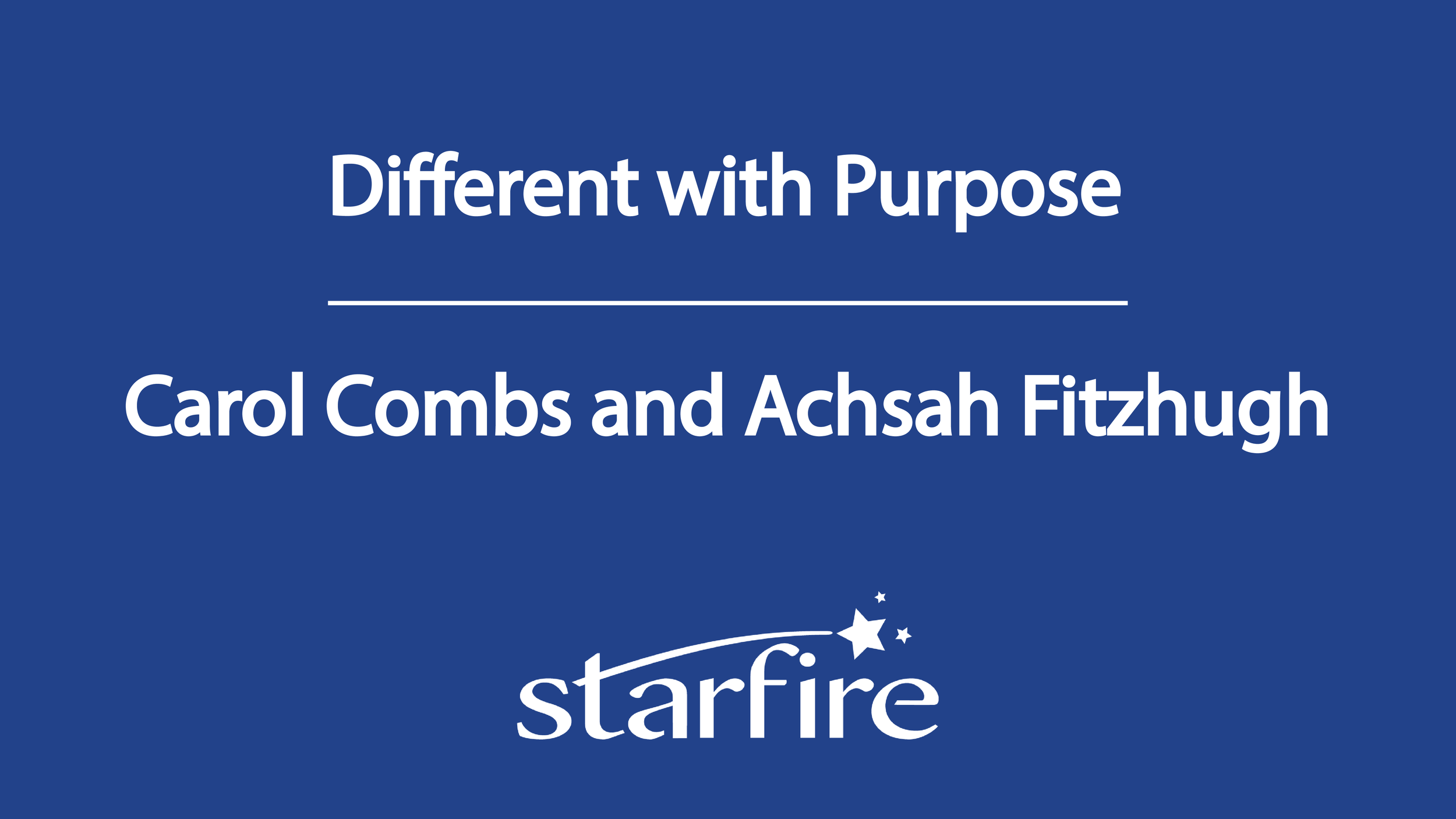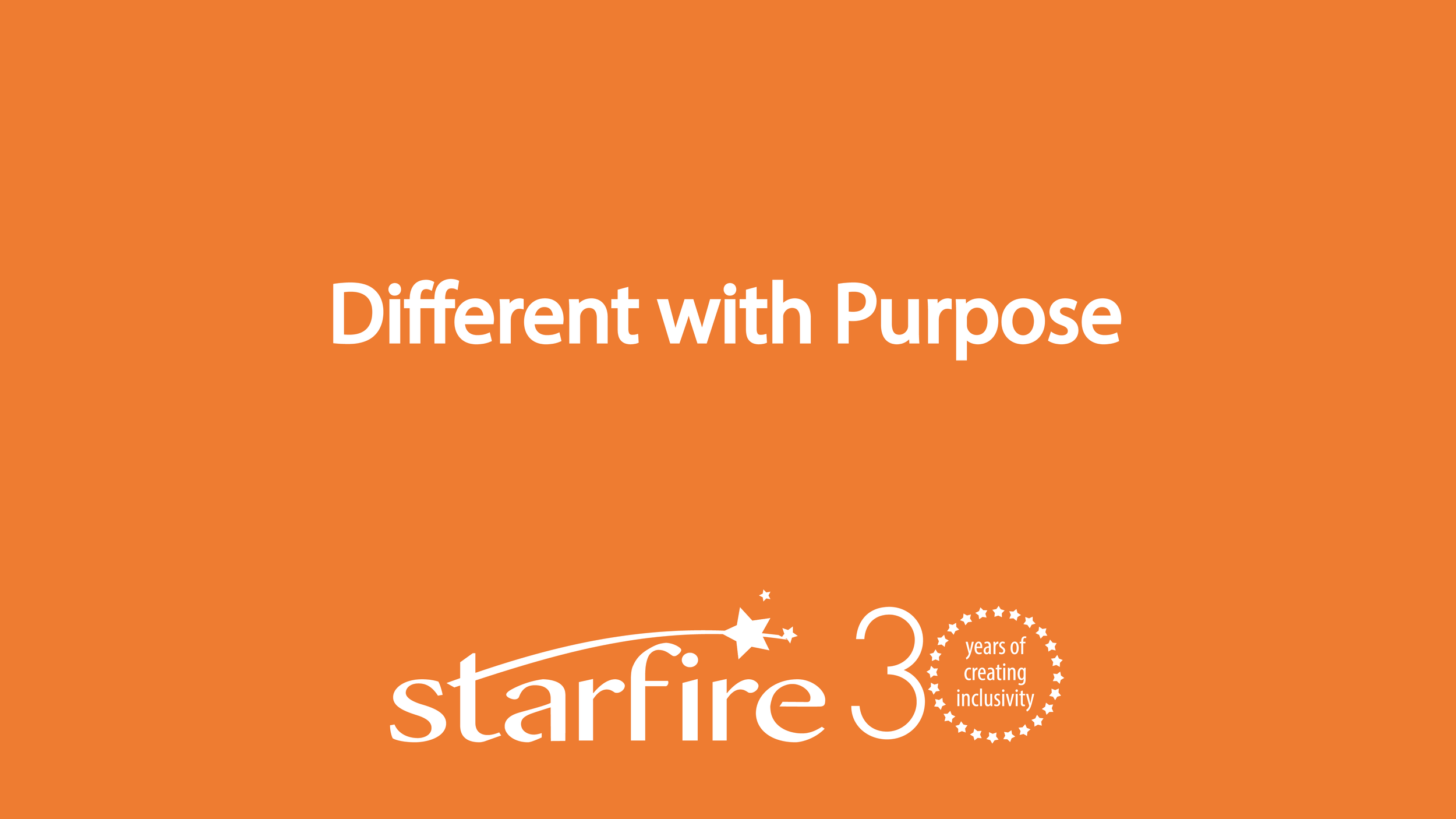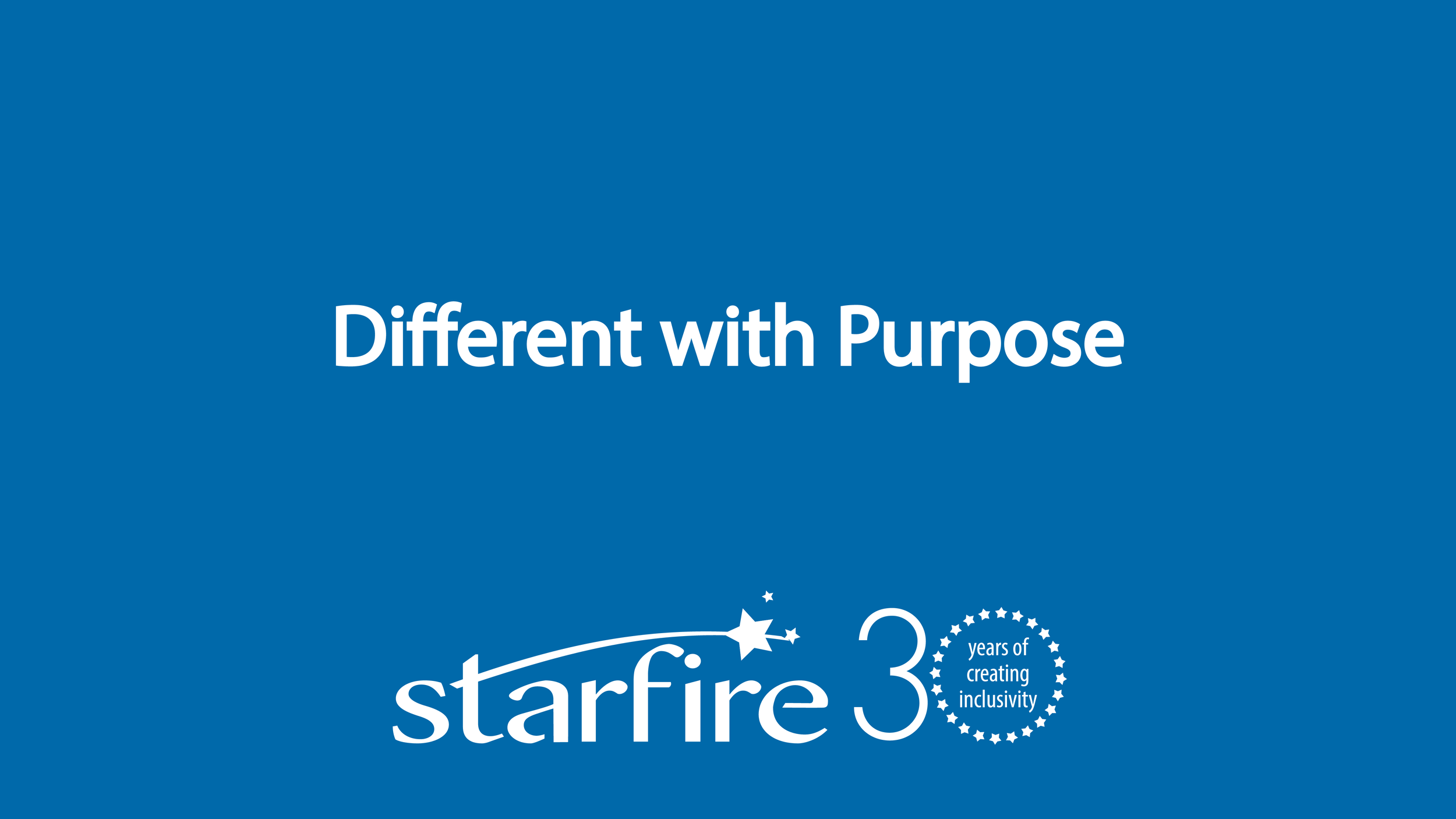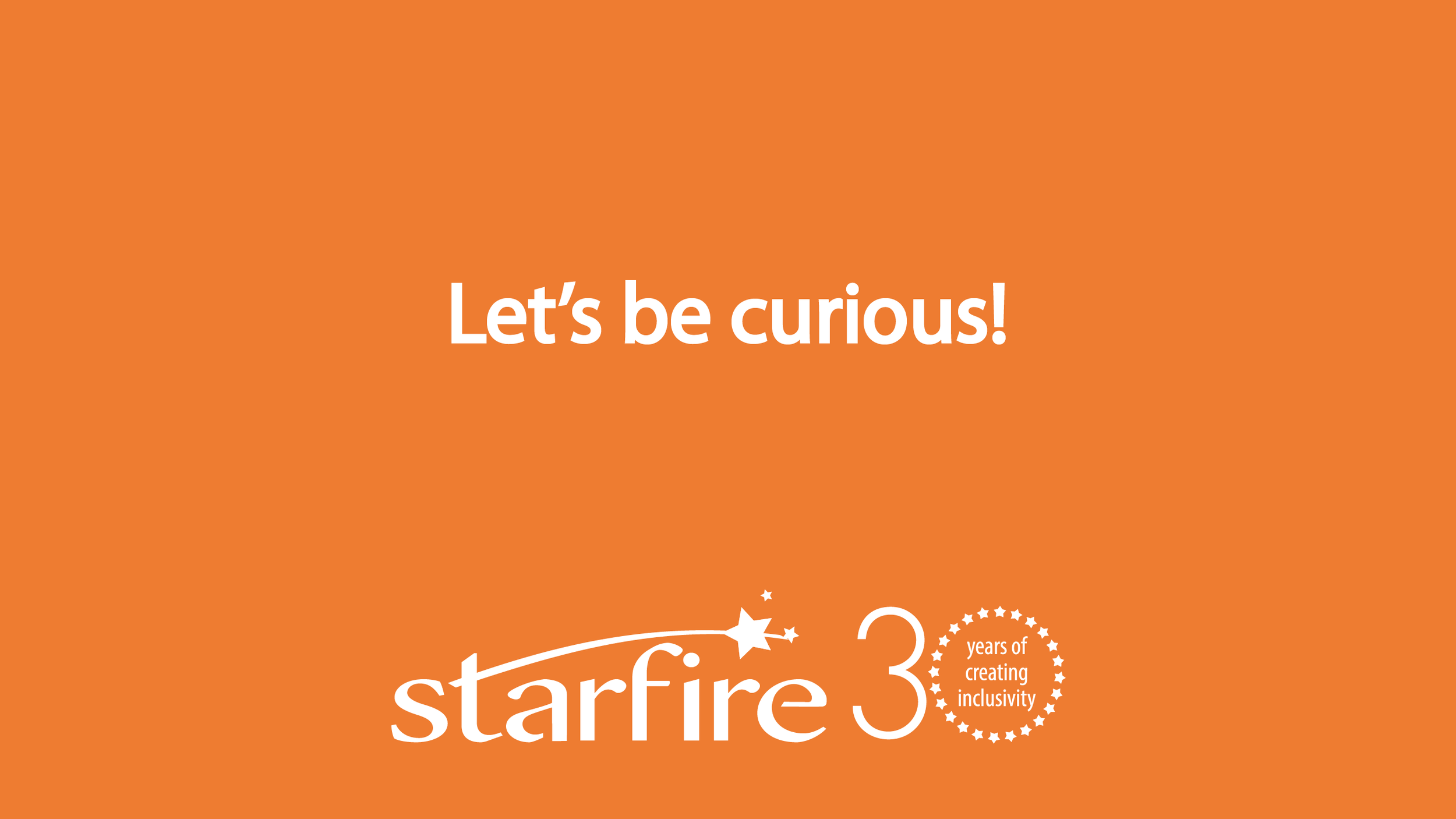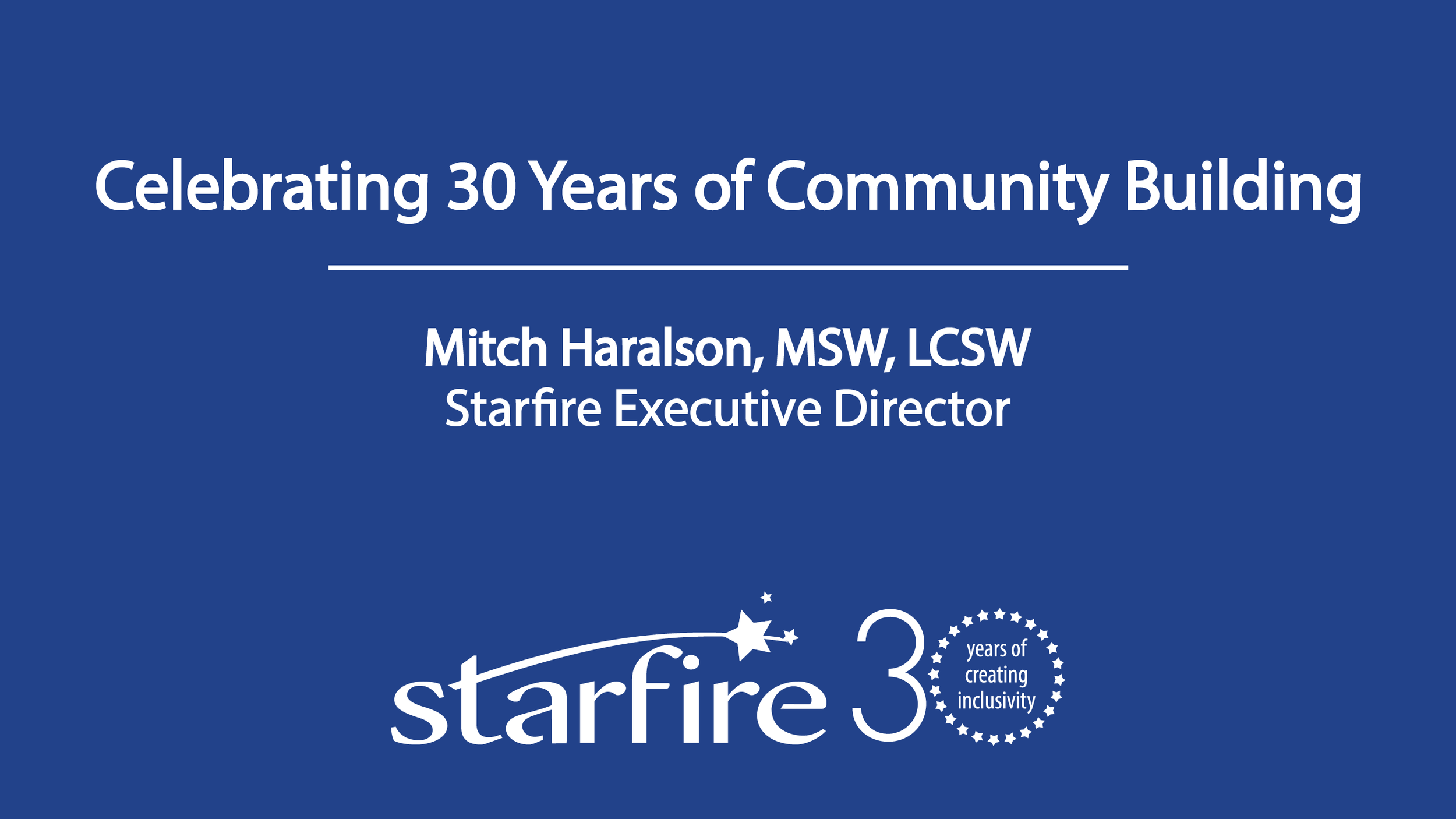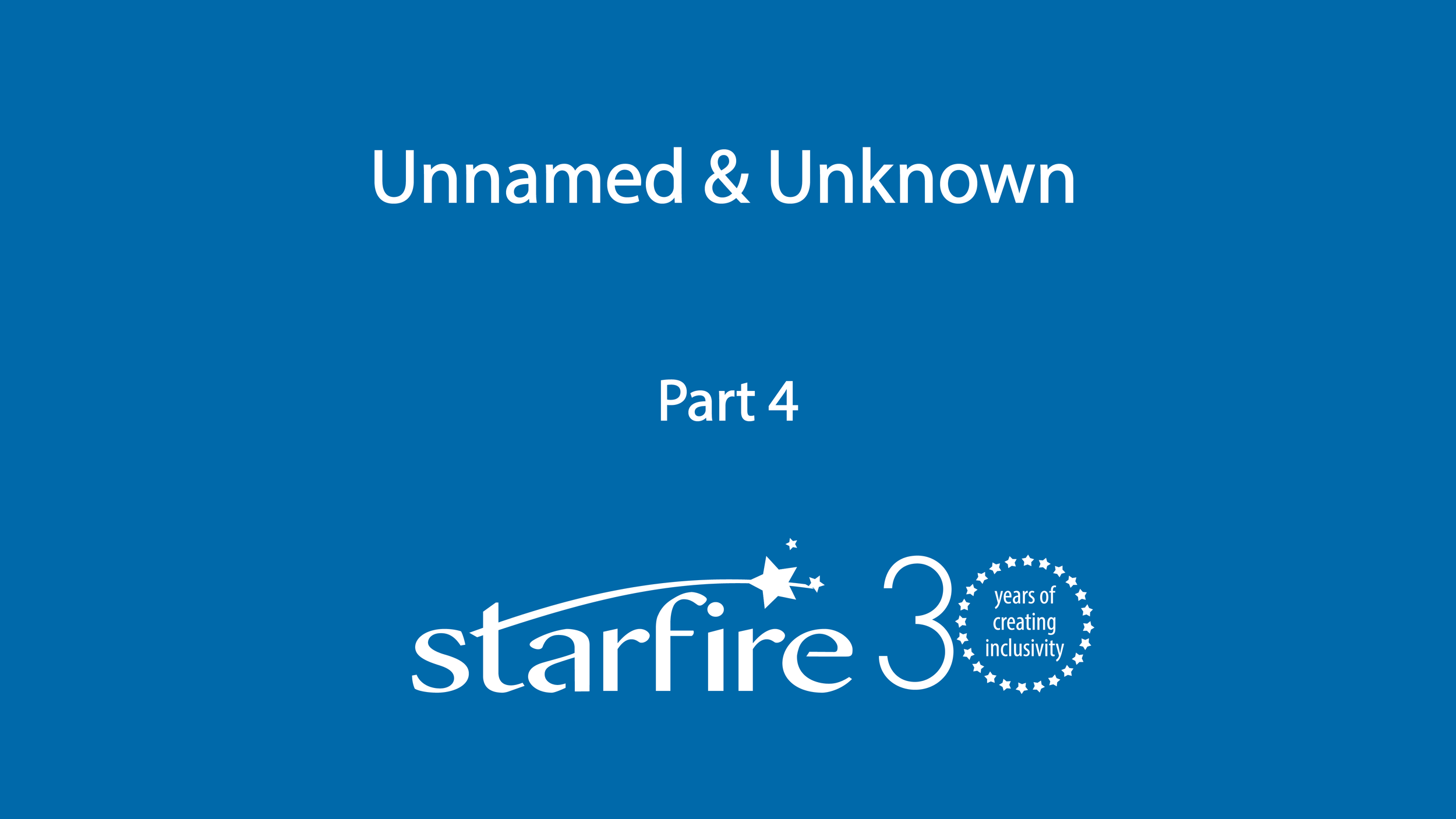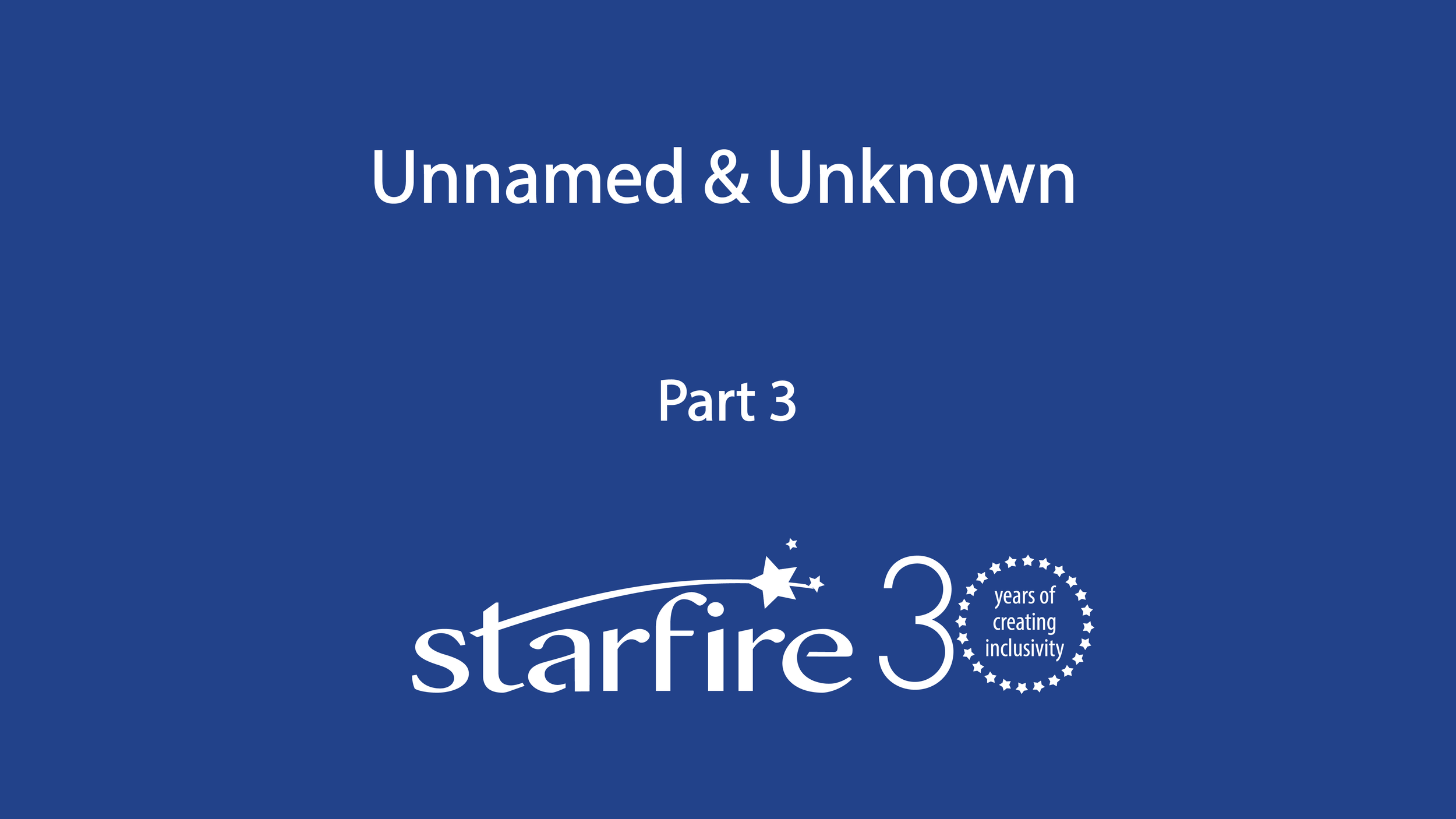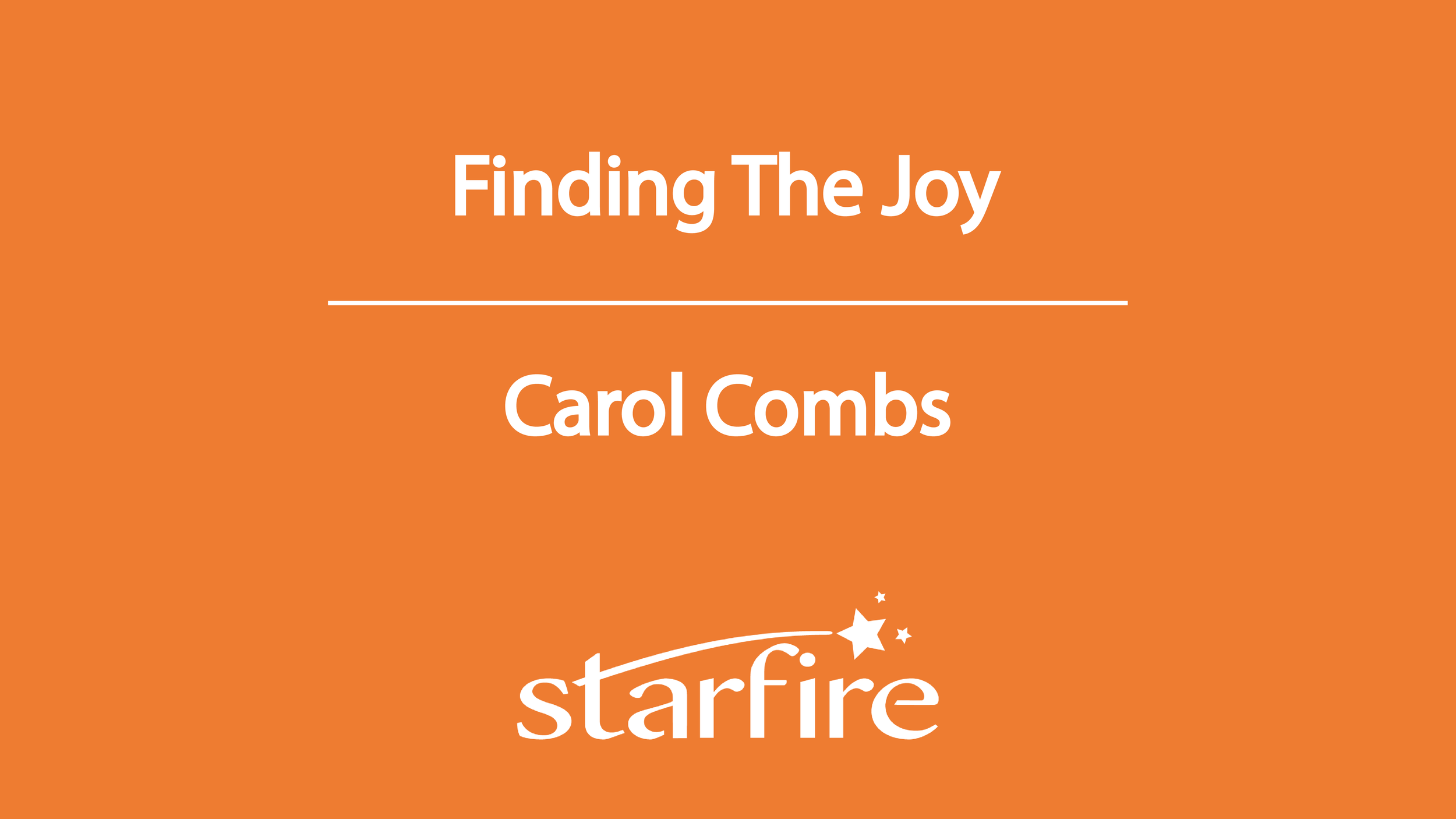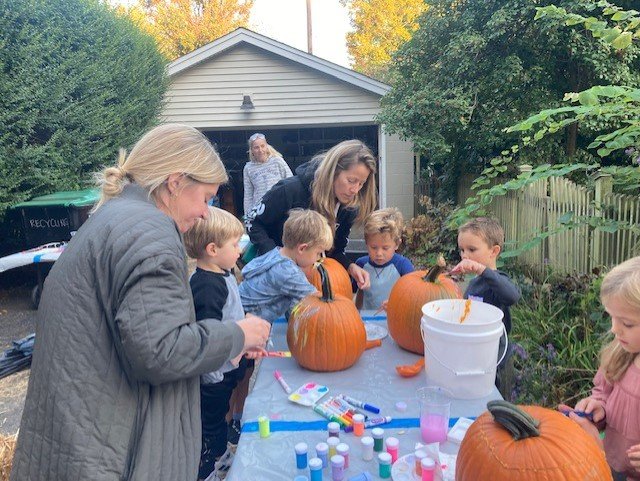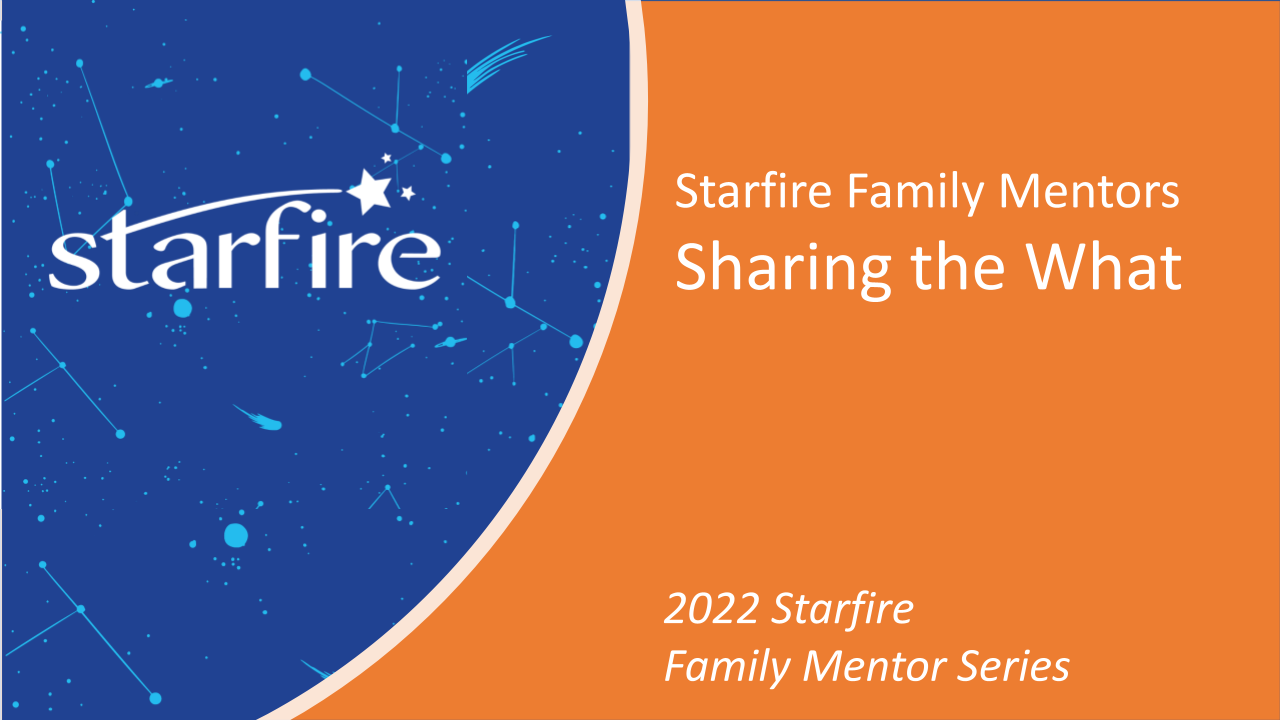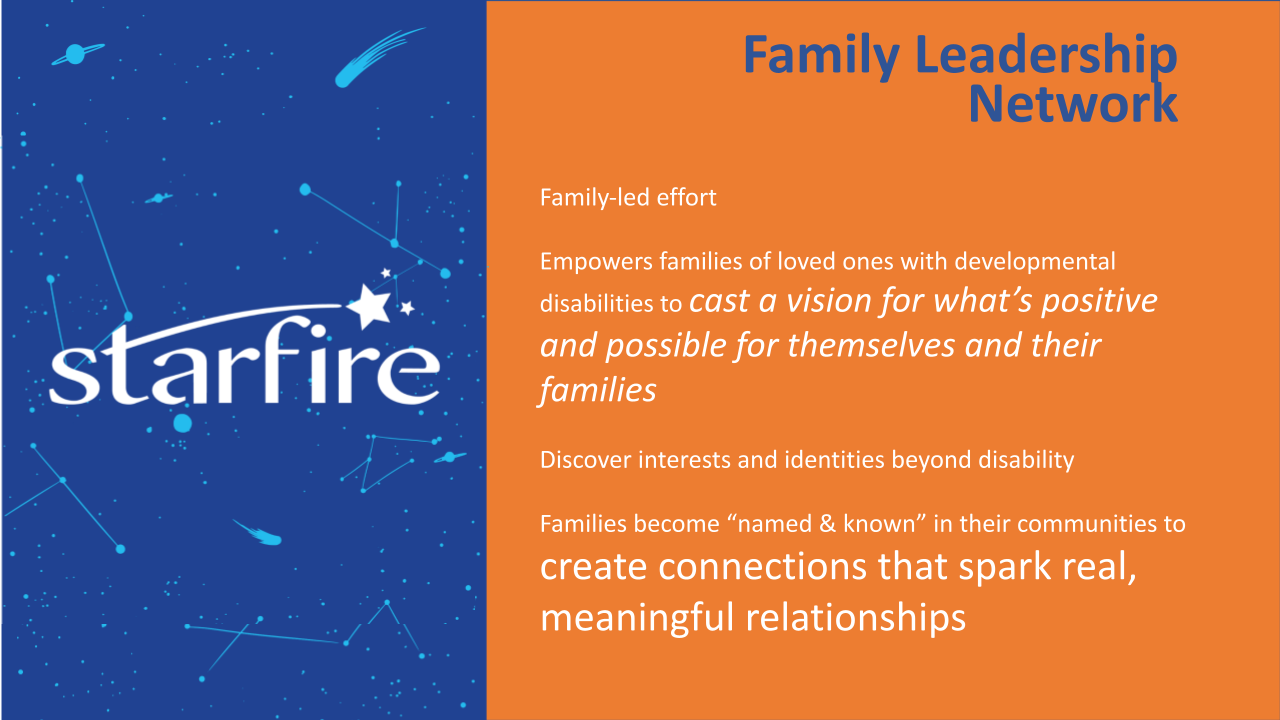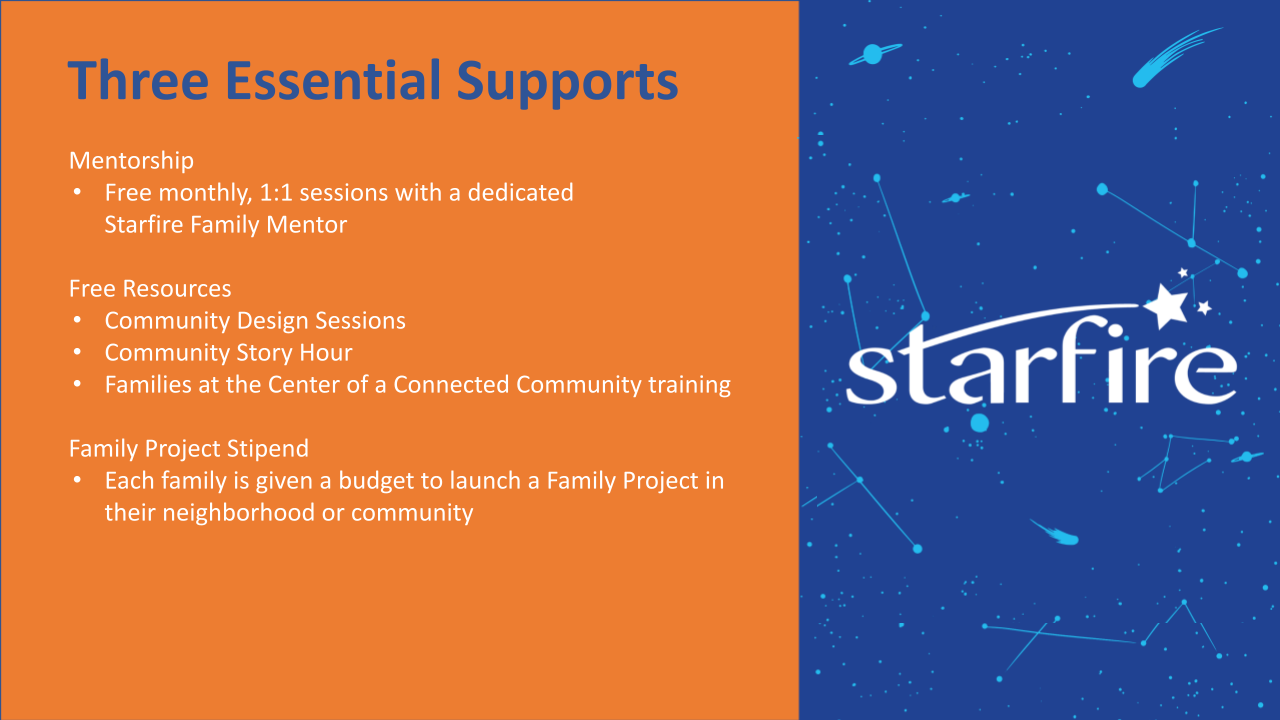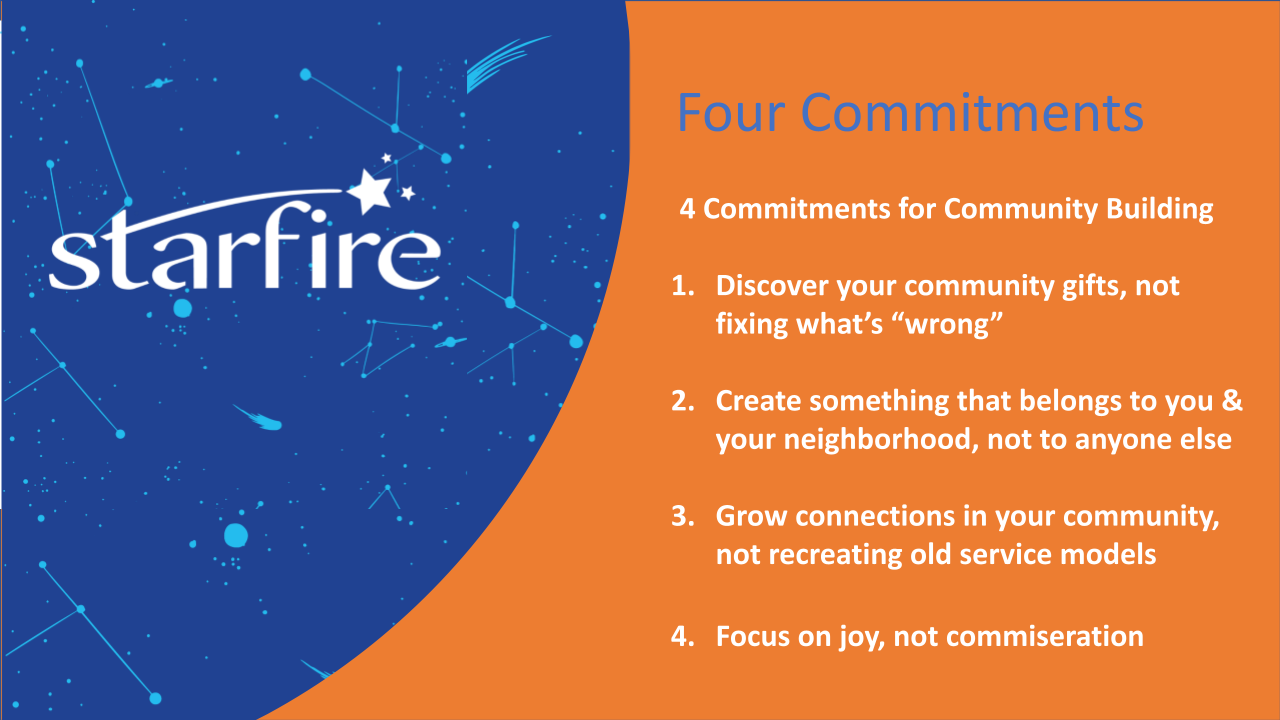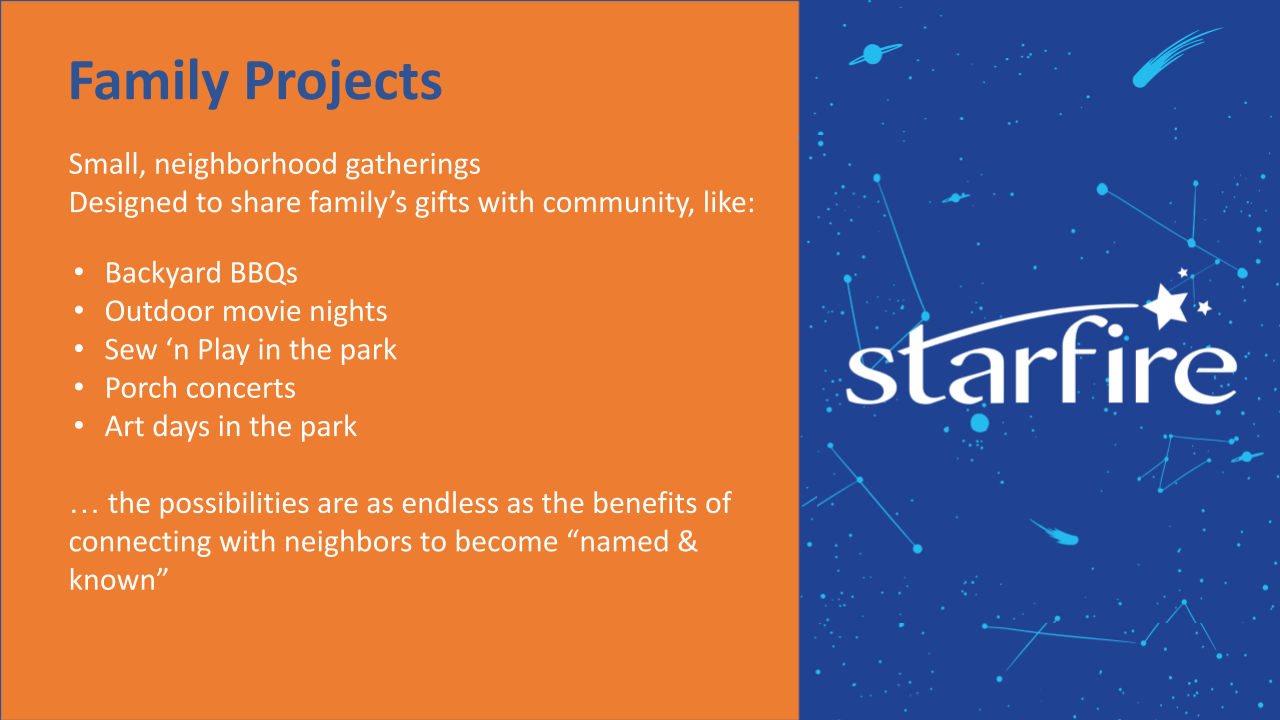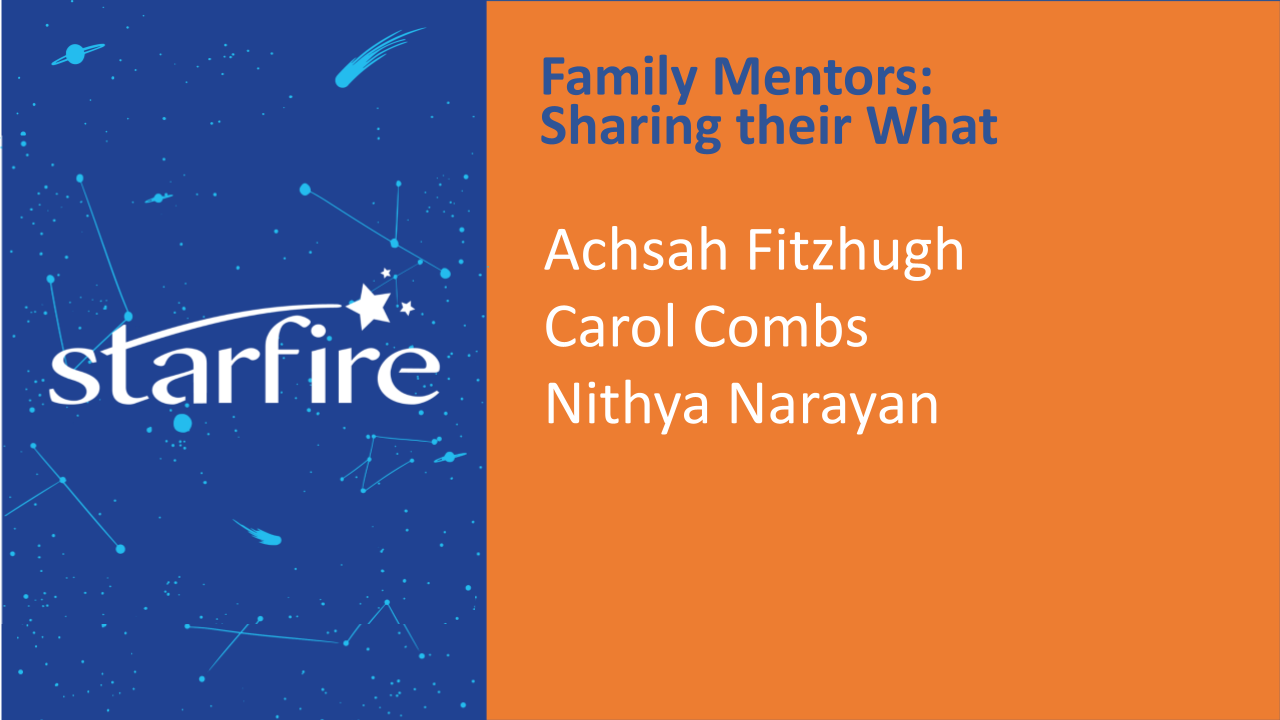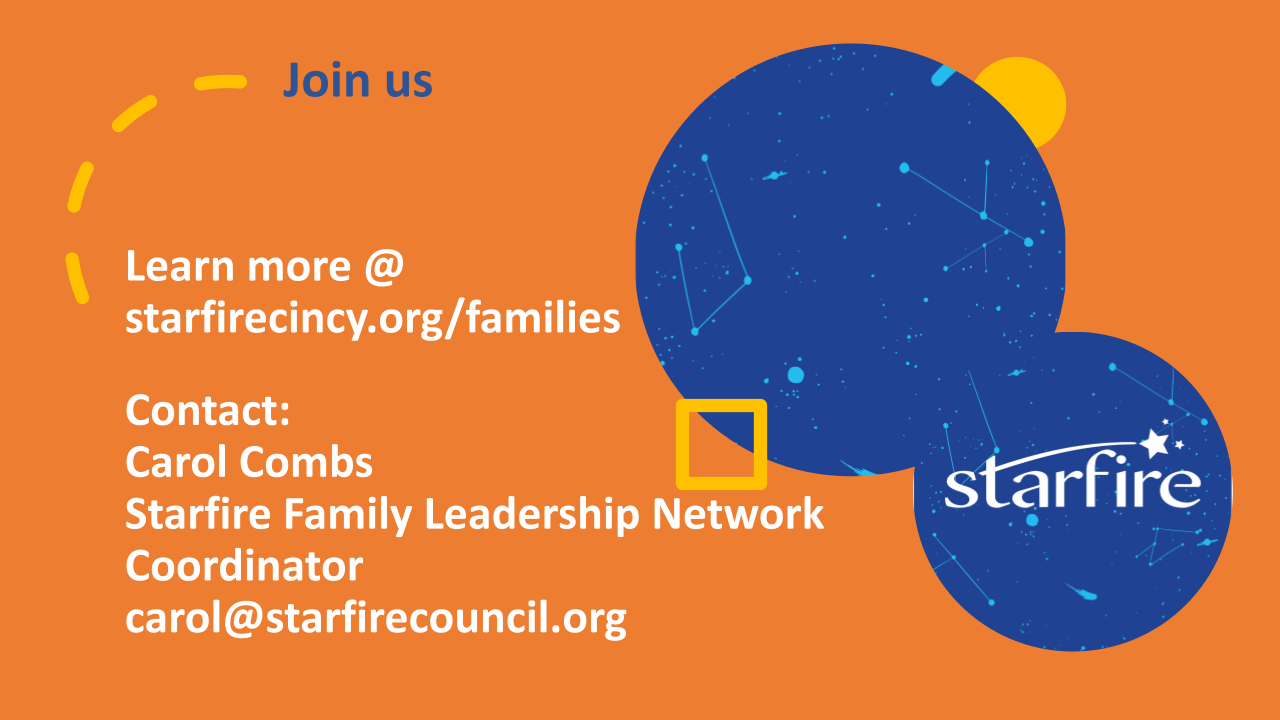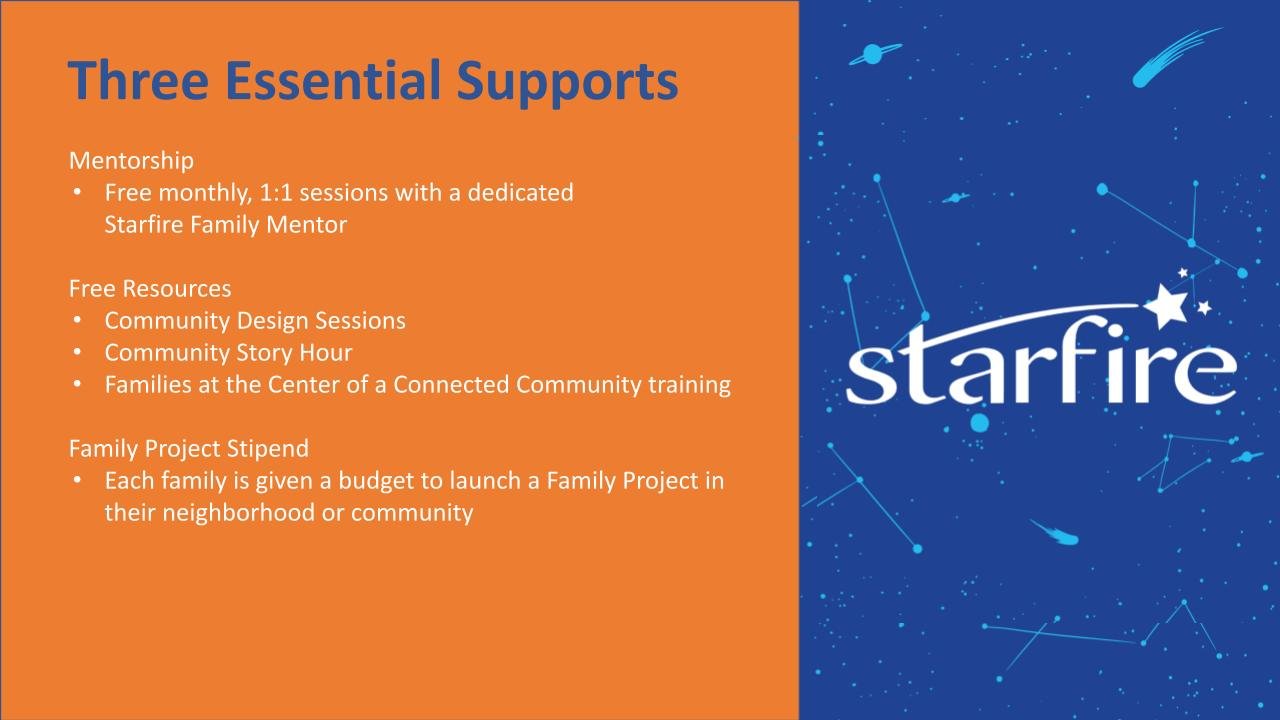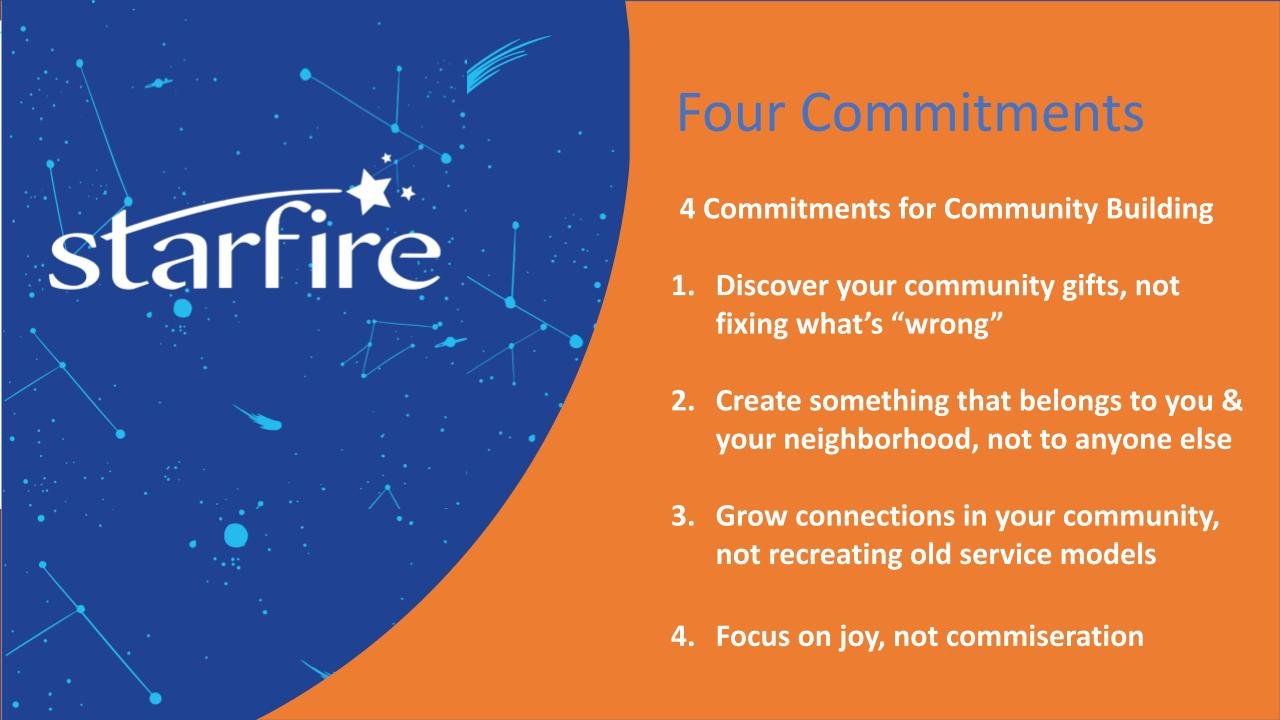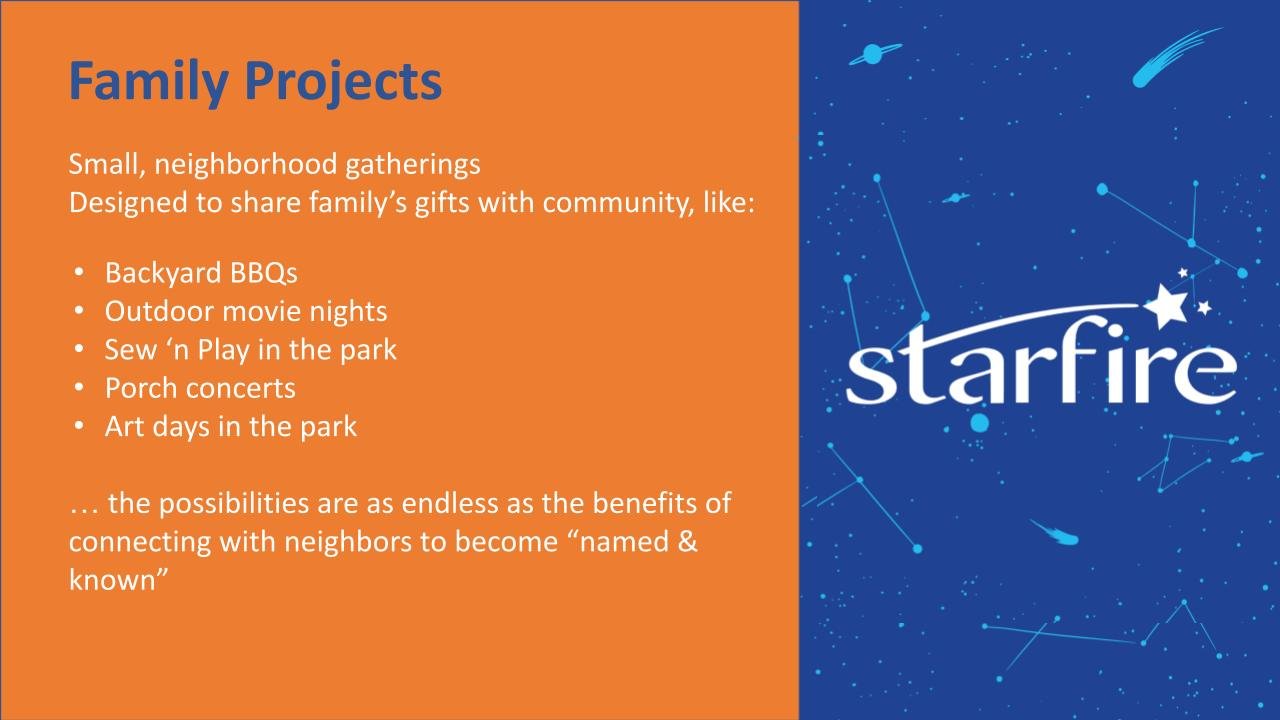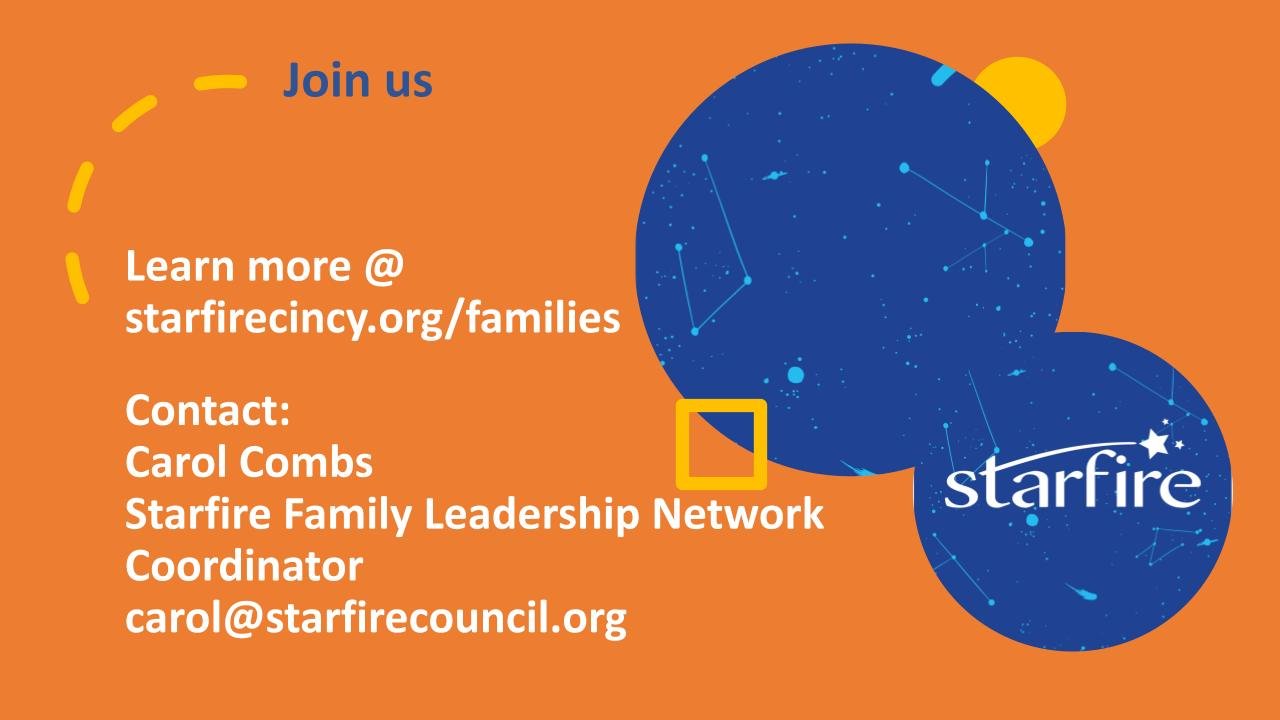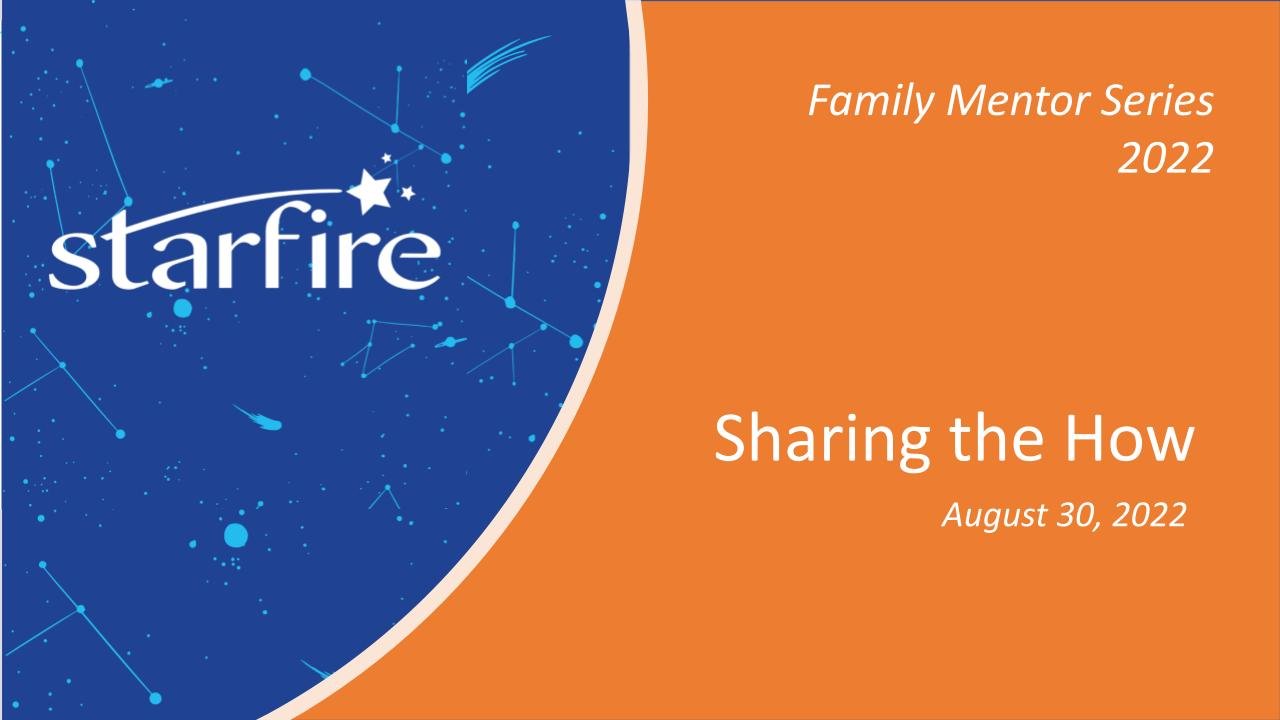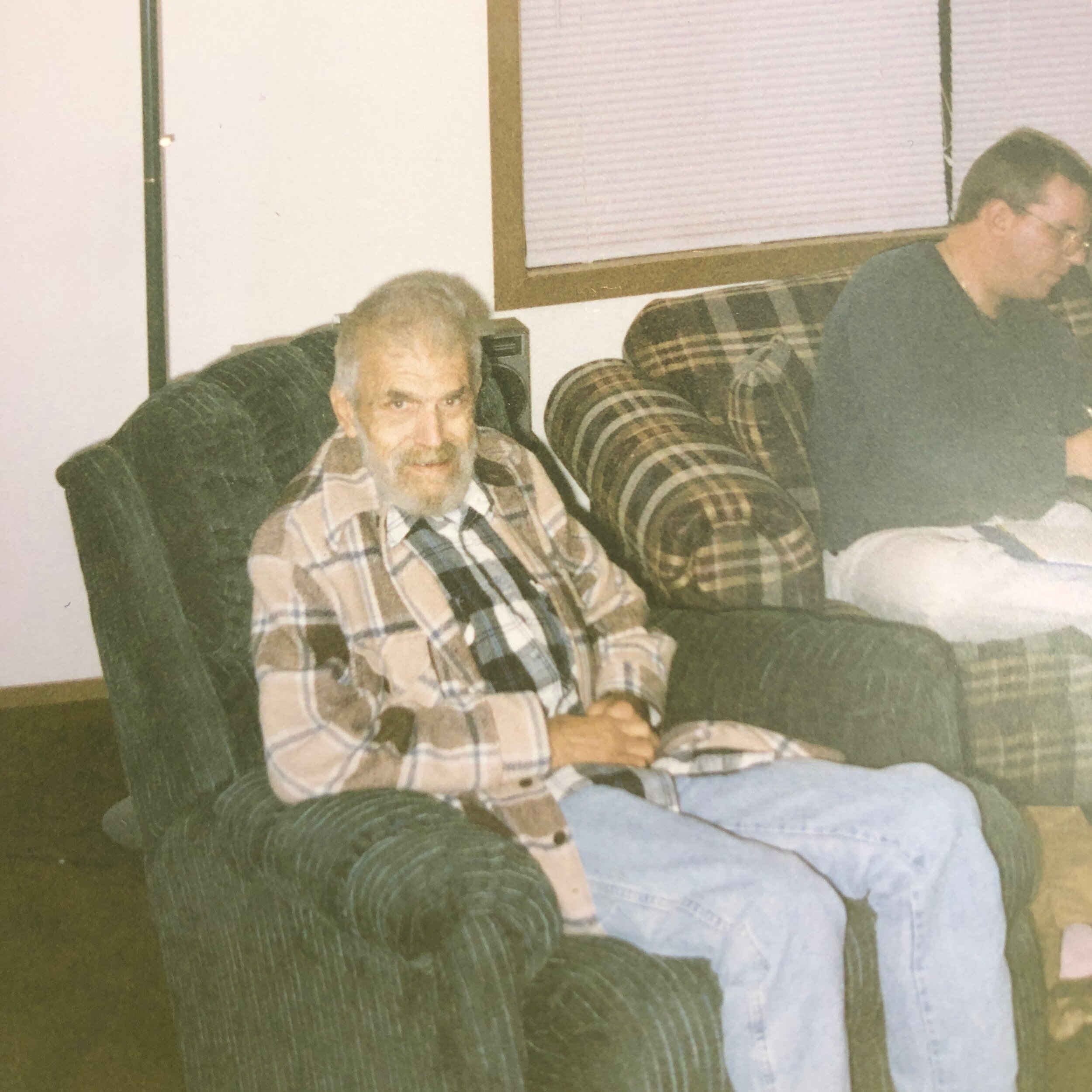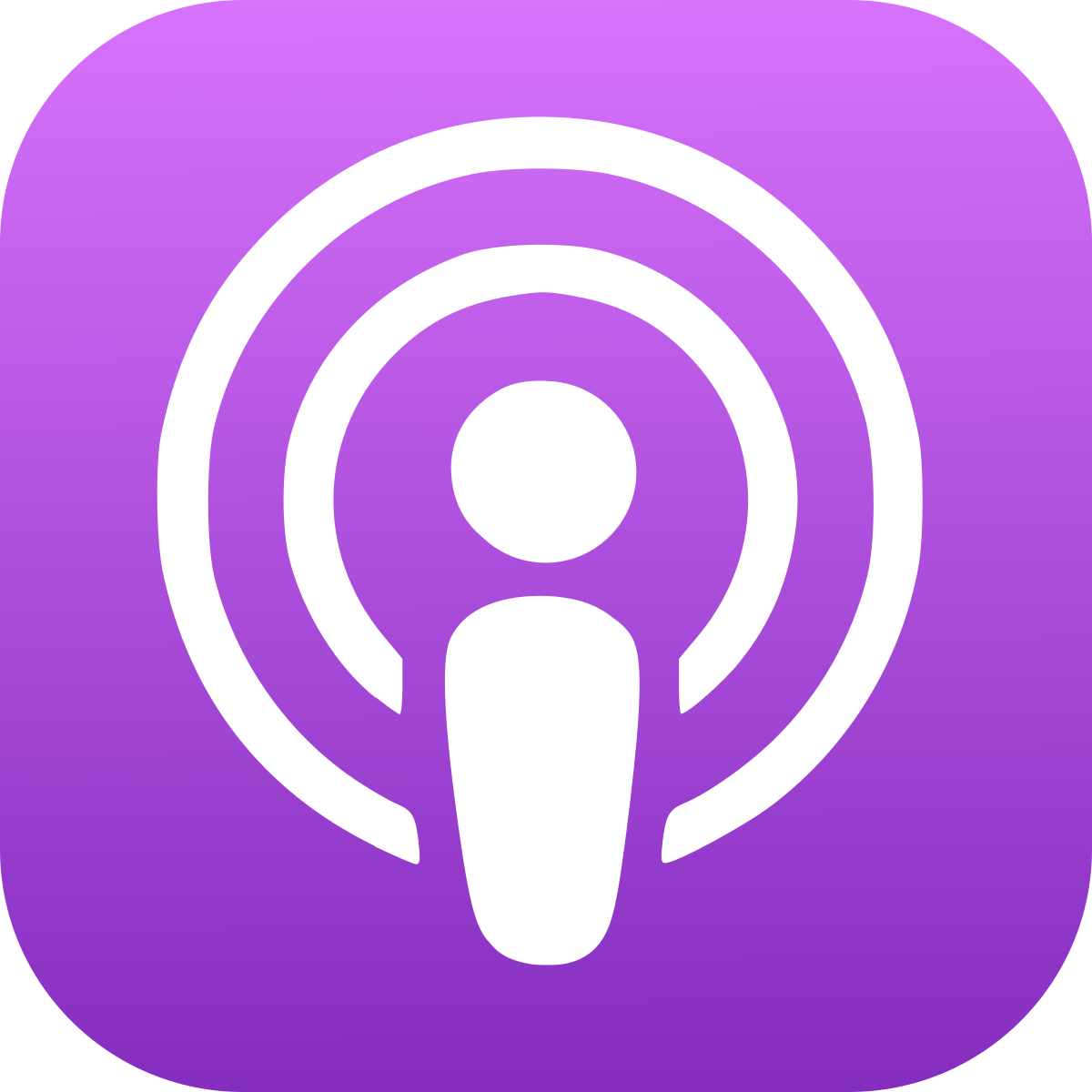From Starfire, this is a podcast on what's more possible in inclusion, community building and relationships.
Bridget:
Welcome. I'm Bridget with Starfire and I'm lucky enough to have Alyson and Mike here to talk with us today and talk about Starfire and your all's involvement and also what's kind of coming up in the future for you all in relationship to Starfire. So would you guys like to introduce yourself?
Alyson:
I am Alyson. I am a previous employee at Starfire. I was there for almost six years. That's where I met Mike and we started our relationship. At this current time I manage a facility in the sports world, so stay involved and very active.
Mike:
I'm Mike Holmes. I was a member, Starfire member. I was a member of, I do the same thing. I worked with Alyson with Cincy Swish, I was an ambassador.
Bridget:
So you all met through Starfire and then Mike, you talked about Cincy Swish because you guys did some things outside of you know what you were a part of was really like a day program kind of in the building, but you and Alyson kind of stepped outside of that, right. Beyond just what was happening in the program.
Alyson:
So Mike and I used to eat lunch almost every day together and Starfire used to do a path program. So Mike walked out of his path and said, do you know any basketball coaches? And I'm like, well, know quite a few, right? Run a basketball organization and I coach myself. So Mike's had quite a few opportunities, junior high, high school, young kids and also does an inclusive basketball team in the wintertime
Bridget:
As the coach of all those,
Alyson:
As the coach of all those either head or assistant.
Bridget:
Mike, what do you think all these years of coaching and all these different teams and ages, what has that meant to you?
Mike:
They need more discipline.
Bridget:
Oh, you think the players need more discipline?
Mike:
Yes.
Bridget:
Okay, but what about for you? How is your life, is it better because of all that coaching? In what ways?
Mike:
Yes. Both coaching, manager and player. Playing these years because Swish helped me a lot.
Bridget:
Yeah. How did it help you, you think? Swish.
Mike:
Okay, I'm not scared anymore. I'm not scared. And one year, I started coaching with Alyson. Fourth grade team, original fourth grade team, I'm sitting, sitting. That's why I'm sitting on chair because I said, “Oh what do I do?”
Alyson:
But you still have those relationships. Yeah,
Mike:
Relationships too.
Alyson:
Those young ladies are now fifth year seniors in college are getting ready to move on to see what's next in their life, but he still has those connections with them when they come back during the holidays or during different tournaments or different things that we see them in. We've been able to go to a couple games and watch them. A couple of them play in college and then the parent aspect. So to get everybody involved, he's been able to go to different restaurants or hang out and continue to grow those relationships. As we travel with Cincy Swish about once or twice a year, he's had the opportunity to also not just have to be with me, so not just the coaches traveling and whatever. I remember we went to Tennessee and a family took Mike to the mall and took Mike shopping and Mike came back with a whole new outfit.
Mike:
Yeah, true, just tell you, Bridge and everybody because I get built friendships and relationships, with families too from Swish and Mariemont. I coach Mariemont and John Well Parker, I talk to him every time. He was a director of Cincy Swiss back then.
Bridget:
And it all started with some lunches with Alyson and then just asking the question, of do you know a basketball coach however long ago that was, and now here you are.
Alyson:
How long ago was that? Mike?
Mike:
13 years
Alyson:
Known each other for 13 years.
Mike:
Yes
Alyson:
But I think that's just it. Some of these longevity relationships that he's been able to build and still has. Probably talking to John and or myself almost every day.
Mike:
And Kevin Fry too sometimes.
Alyson:
Sometimes. Kevin Fry. He's been able to go to graduation parties and things with people that he's impacted their lives by being their coach.
Bridget:
I appreciate Alyson talked about longevity and I've kind of been thinking about that the longer you know people and that's something about relationships the longer they last, but there has to be some ability to change in those, right? Leaving space for Mike who you were 13 years ago and who you are now, or Alyson, me, any of us. I think those are the relationships that stay is when you kind of allow for that growth in that change and what your interest, where you start from and what you actually want to do. And I think that's kind of a testament to you all and how you guys have allowed for each other to change. As your interests change looking for those opportunities. I think Alyson, for her, she's been introducing you and Mike, you are so good at remembering people and also following up and not afraid to ask that question of, Hey, what about this? How could I do that?
Mike:
Bridge, I'll just tell you another one coaching wise, I'm head coach of GBBN Co-ED basketball. GBBN also.
Bridget:
Yeah. So even with your work, you were able to tie your basketball love into even the job that you had at GBBN. Yeah. Yeah. That was a great move.
Alyson:
I think of the connections he made at GBBN. So Mike did have a recent birthday party and the number of people that were even at his birthday party from after retiring from his place of business, his place of work for how long were you at GBBN?
Mike:
12 years now.
Bridget:
Yeah,
Mike:
Starfire got me a job there
Bridget:
That was a good thing too. You've done a lot.
Alyson:
Just trying to find those next steps and that's when we kind of circled back to Starfire and they asked us to do the collaboration project, the community project.
Bridget:
Yeah, that's what I was going to say. Because this is the first year we're stepping into the space of really trying to get the community to really kind of step up and into working together and we're calling them community projects, collaboration projects. So when I was given those, I did think of Alyson and you, Mike, as people that are already pretty well connected to each other and the ability to do a project. So I asked Alyson first I think to see if she'd be willing to help create something new that you guys would both enjoy doing and that would kind of keep all of this wonderful stuff and energy that you all already have going and how Starfire could still be a part of it. We don't want to cramp your style or get in the way of it, but if there was stuff that we could be doing to help support and keep that moving forward.
Alyson:
And I think the timing of it was impeccable. Right so Mike was in the process of retiring from GBBN and then I was stepping away from my spring /summer coaching and just trying to get Mike back involved. It's where we kind of realized how far can our connection go? So yes, we rely on each other to have each other's coaching staff, but where else can Mike coach, what else can Mike do? So we had brainstormed on the Swish end of it but hadn't come up with anything else yet of what was next, what could be Mike's main focus. Mike's all about being kind of the people person, the center of attention. And so when we were asked to do a collaboration night, we invited a lot of people.
Bridget:
So that was part of the idea is with the project, you get some funding, right? There's a little bit of money offered, but to do something, we were calling it a collaboration night to help people brainstorm what might be good ideas and you guys were willing to do that, have a night where people brainstorm and think through ideas. What did you think of that experience, Mike? That night that we kind of hosted?
Mike:
I like it. The tournament thing, next year. June, 1st of June is on Saturday. We’re prepared, me and Alyson we prepared a tournament and a Swish Hall of Fame and Swish reunion.
Bridget:
Yeah, that's sort of where the idea landed was let's use it and we'll all organize next year a reunion.
Alyson:
What about the people that were there?
Mike:
Them too.
Alyson:
Some new people that Mike had just met and we're getting to know Mike even more, some people that have been there and knew you a lot longer and then obviously Tim and Bridget that have known you. I think the longest out of all of us. Mike likes to plan. Mike likes to get out and again, more people in Mike's world and also he has connections with those families as we all do, but we don't get to see them or there's not really a space in the sports world at the younger grades to get everybody back together. And that's been Mike's big goal for probably the last three or four years and just trying to get other people's ideas on how this can all work. And something that we can continue to do year after year and kind of keep that stamp on it. So yeah, we landed with, we got to have wings though because Mike is all about wings.
Bridget:
So even from that night, were there things beyond the idea that came out of just spending that time together and talking to each other and having those conversations?
Alyson:
I'd say so, right?
Mike:
Yes.
Alyson:
You've gone and had wings with a few different people that he had never gone out and experienced. You went to a football game.
Mike:
I went to a football game, two of them. Turpin one and Mariemont one too.
Alyson:
There's plans to see a WWE event with another family. So, something that I am not really interested in, so it's great.
Mike:
She knows
Bridget:
You don’t need to be.
Alyson:
Exactly. And other people that had shared Mike's interest in boxing, because obviously we all have more than just one interest. Basketball is definitely what has kept Mike and I connected. But yeah, we also share different things and go different places.
Bridget:
Well that collaboration night just to kind of, that was sort of the idea is to talk to people to learn more. We know you love basketball, but what else do you love and what else did they love? And so from that, what I think I'm hearing, Mike, is that the people that were in the room with you that night sort of were like, oh, Mike likes wrestling. Let's keep that in mind and we'll invite you out there. The fact that invitations just to hang out without Alyson, not that Alyson couldn't be included, but the beauty that you have multiple people sending invites and spending time eating wings or going to football games is pretty, I love hearing that. That makes me pretty happy that that has happened even without your Swish project coming to life. I love that that's already happened and sort of shifted a few things with some people and that potential with them.
Alyson:
That's what it all comes down to. We all need a community around us and all of our schedules are busy. Everybody wants to be involved and Mike wants to continue to get out and be a part of the community and do different things and learn different things. So yeah, that's exactly it. And some of Mike’s other closest friends weren't even at this collaboration project and it's just those people are still inviting Mike to go fish or camping or whatever that might be, but it also fills up his calendar. What we all want to have different people that we go after to do different things as well and share those life experiences.
Mike:
I'll tell you. That's why I love my life, that's why Starfire’s first one and that's why like Alyson say about me, that's why I get out.
Bridget:
Everybody wants to be out and have those people that you get to know and whether they're new friends or old friends, we need them all, right.
Alyson, I'm wondering, you sort of had the front row, Starfire employee seat, not that you were hired for programs, you were more in administration and management, but in many ways, I think you grasped what Starfire’s goals, looking at people's social lives and the inclusion that's possible out there. And Mike is here with you and you guys have spent a lot of time, but in many ways, you were the ultimate connector for a lot of people. But I don't know if you've got a perspective just to say from a person that what is this Starfire is asking me to do or be a part of? If you just have a perspective on that, as just a community person, what's the difference or why would you do it and why do you say yes?
Alyson:
What it comes down to is we all want that person to go to for something, right? Never just your spouse or your partner or your one best friend that you can go to everything in your life with or share that experience. We all have somebody, oh, I can run to this person and do this or do that. It's also when things get tough. I think this was very eye opening for a lot of us recently. Things get tough, whether you want to talk about Covid or needing some place for you to stay or even myself, something would happen. You want somebody that's going to be there for you. That community's got to be bigger than just one person. Who else can he call? Who else can he have conversations with? Who wants to have those conversations with him as well? Who else in the community or who else can fill up Mike's social bucket, social life in regards to that?
I think that was the thing that struck me the most. I am not a homebody by any means and at times you hear these stories of sitting around for 10, 12 hours and then going to sleep and then kind of doing the thing the next day. We're like the lives that they could live and the people that can be involved. Mike and I have had real conversations. Mike and I are best friends. Mike's almost like a brother to me at this point. So if I'm going to say it to my best friend regardless of disability or not, Mike's going to hear about it. Good, bad, or indifferent. Mike knew I was taking a new job when I came to this facility. Mike was one of the first ones to know that I wasn't going to coach. So what does that look like and where does that land him and what's next in life?
Mike and I did, we hit off right from the get go almost, right? And we talked about lunches and different things like that, but it obviously grew very fast, and I think lucky enough to be grounded enough to have Mike, but also wanting that for other people as well. And not just, family is wonderful, but as we all know, we like to get out and do other things. So I think watching those relationships grow amongst everybody was self-fulfilling. Everything that Starfire has done and continues to do to connect people. I do think unfortunately in the world we live in, people don't always think, “oh, I'm going to get wings, let me call Mike.” Now they do. And you just have to make that almost on the forefront of the world we live in and then, “hey, I want to go have wings too, so let's go. Or whatever that event or job or social aspect could be.
Bridget:
Absolutely. I think everyone has so much potential, right. Alyson, you said, gosh, there are people that just sit at home nonstop all day long and they really just don't get that chance to really find themselves or to find their purpose or their people. And that's the hope is that we're helping people find more: more people, finding what their purpose, what they love, their drive. Like Mike, basketball, and business, you know that about yourself. Some people have a little more that they're confident in and others are like a blank slate in many ways with lots of potential. So I just appreciate thinking about that. If we find better ways to spend time and wings, wings together is a great way to spend time, right. There doesn't have to be these high stakes ideas, but just time to connect and chat. And where does that leave you?
Alyson:
That says it perfectly, right. You're going out to dinner. It's not hard to add an extra invite. It doesn't take that much time. It's a text or it's a call. It doesn't take much; you see something coming up and put it out there. And at this point Mike's pretty much on the calendar of different events of in regards to Swish than I am. So that is our longevity, and he keeps me on my toes, which is what I've come to expect as well. But I think it's those relationships and those things that really stand out.
Bridget:
Mike, how does that feel knowing you get invited sometimes and Alyson doesn't?
Mike:
I love it.
Bridget:
You love it?
Mike:
Yes. I'll just tell you, Bridge. Alyson doesn’t know that. I want to take over soon, Cincy Swish.
Bridget:
Of course Alyson might know that this was your ultimate plan.
Mike:
Yeah, my main goal to be a director of Cincy Swish. I want to be a coach there one day. Alyson was coach there, Kevin Fry was an assistant back then. That's why this helped me a lot as a coach. Did you see that movie, Hoosiers?
Bridget:
Yeah,
Mike:
I saw it 100 times. That's why I think of basketball and Cincy Swish and coaching wise. It has helped me a lot.
Bridget:
Yeah, all those experiences are going to help you, everything you've done. Yeah,
Mike:
I want to be the head coach of Cincy Swish too.
Alyson:
And what about those relationships? You still have Kevin Fry, but now you're the ambassador. So you go and coach how many do you coach? Three or four games a night with different teams and different players. So starting..
Mike:
High school and youth, young players, high schools, both.
Bridget:
And your title is ambassador coach? Is that what you said?
Mike:
Yes
Bridget:
That's pretty cool.
Mike:
I do all different grades, third to high school.
Bridget:
And that was something that you and Kevin sort of developed and figured out how to do?
Mike:
Kevin Fry. Alyson, she will tell you about that too.
Alyson:
So Mike got to, again, trying to expand that world. So him and Kevin coached for three or four years together and then Kevin stepped down. So it's always one of those things like who and how can we continue to grow? And I think that's one thing. We never want Mike to stop coaching. He loves it so much and sometimes it's not always easy to find that position or somebody else. So right now, he gets to taste a little bit of everybody's practice style. When coaches know he comes, He's prepared to do a drill or two and then he sits on different coaches' benches to learn those different things. But you and I came up with the ambassador role so that his relationships and his basketball coaching don't just stop with me.
That is the hardest thing with a lot of this, right? If I'm the first point of contact, but I'm also the last point of contact that doesn't help Mike when either my love for it or my stop or my work or whatever it is, gets in the way of something that's not fair to Mike. This was an easy fit. Mike is so good at meeting people and talking to people. He does this weekly. And the number of people that he is been able to touch and talk to compared to one team has definitely benefited him. He will tell you, I believe, that there are more that he likes to do over other teams, but there are players that we all like and there are coaching styles that we like and don't like, but we all have to learn from each other.
But the other part of this ambassador role too is because Swish does go year round, he's able to continue to go year round because not every basketball coach coaches for Swish year round because of high school or family or whatever else. So Mike's able to continue those relationships and meet all of our coaches instead of just being, as I put it, stuck with me.
Bridget:
I love it. He wouldn't be stuck with you. But it's a beautiful thing to have multiple people and touch points and supporters that you have and people that are thinking of you when there's an opportunity to be aware and to say, Hey, I know who could do this. Let's call Mike. Right? That's a great thing to have more people with you. You being known, right? Your name to come up and think of who would make sense in this or who could help us and to have you on their list of people to call.
Alyson:
You hit it right on the head. Mike is asked to come to some of these practices. They know he's going to run a defensive drill or they want to work on this or things like that. So more of, Cincy Swish coaches know if Mike's coming, they're going to get a little extra practice on this or focus on that and are asked. So those relationships can only grow in regards to that aspect as well.
Bridget:
Well I love it and I love that we've got plans coming up ahead, big plans for the Swish Reunion Hall of Fame.
Alyson:
Yeah, we started to sort of put a name to it. We haven't quite yet. It'll be a round, a small basketball tournament and then kind of a night to honor Mike and bring parents back and players back and tremendous work. And so that collaboration night was definitely, that was something for Mike to revisit new, old friends and people and who else these people know to connect with Mike as well.
Bridget:
Yeah, with wings to celebrate. I love that that's coming up. Big plans to hear about and to have to look forward to this year. I love it. I think that'll be great. Mike, do you have anything you want to add or say or?
Mike:
I love the game of basketball. Starfire helps me a lot. I was that person. That's why, love it. I love it.
Bridget:
I love it. You guys, thank you very much for sharing and talking with us today.
Alyson:
You're welcome. Thanks for having us.
Mike:
You’re welcome.





